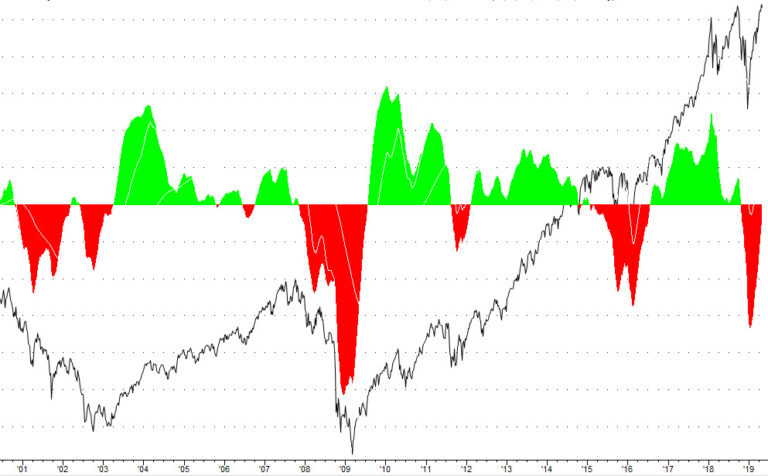Market Overview
This month's models have been posted. There are CHANGES IN EVERY MODEL. The changes are highlighted in yellow.
Why move to a low-cost state … and why not
Despite all the hype about the benefits of tax reform at the federal level, wage earners across America have learned to take the Tax Cuts and Jobs Act of 2017 with a grain of SALT. In this case, SALT is an acronym for “state and local taxes.”
Until January 1, 2018, these were deductible, to one degree or another, from what you owed Uncle Sam. This favored, fairly or unfairly, states and localities with above-average tax rates. Since then, however, the deduction you get from paying SALT is capped. This favors, fairly or unfairly, places with below-average tax rates.
And yet, we’re not seeing a mass exodus from New York and Hawaii to Delaware and Alaska. That’s because it might not be worth the trouble.
Soft-on-crime and Punishment?
Without getting into the politics of it all, 14 of the 25 states that are above-average for SALT are solidly Democratic, and 14 of the 25 states that are below-average are solidly Republican. It’s not a perfect correlation, but it is enough of a correlation that many on the losing side of the 2017 tax law are left to wonder if that had anything to do with coming up short during the 2016 election. Maybe, maybe not, but there was certainly political hay to be made by shouting that the new tax law was designed to reward states that voted for Donald Trump and punish states that voted against him. Across the aisle, this was seen as a claw back of a perk that accrued only to the tax-and-spend crowd.
But frankly, the effect of SALT in general – and the incremental change in treatment – is minimal to non-existent for most residents in high-tax states. First, it only applies to those who itemize their tax filings. In 2017, that was only 30% of taxpayers according to the Tax Policy Center.
Second, the SALT deduction didn’t go away; it just got capped at $10,000. Sure, that includes property taxes and mortgage taxes but, if you’re paying five digits in taxes, then you’re probably making well into six digits in take-home pay.
So should you be griping about taxes or silently smirking about your salary? The Tax Policy Center acknowledges that people who make $100,000 or more, and itemized in 2016, deducted an average $21,000 in SALT so yes, absolutely, their overall taxes went up. But it’s not simply a matter of subtracting one number from another and suggesting their taxes are going up by $11,000. They’re only increasing by the effective tax rate on that $11,000, which might be partially offset by a reduction in your ordinary-income tax rate under the new tax law. If you’re filing jointly and make between $233,350 and $315,000 in adjusted income, for example, your rate just went down from 33% to 24%. If the old rates stayed the same, then you’d pay an additional $3,630 but, because they went down under the new law, you’d pay only $2,640 more. Beyond that, you might get some of that back from the more generous deduction allowed for medical expenses, so this is more likely to be felt by the absence of a tax refund than as a diminished paycheck.
Third, this provision is set to sunset after 2025 at which point the blue states are likely to have more sway on Capitol Hill – and possibly in the White House – than they did in 2017. And even if they don’t, there are plenty of GOP-friendly reasons to see the current arrangement as a form of double taxation. In any event, it’s entirely possible – perhaps even probable – that the SALT deduction cap will be revisited in the not-too-distant future. And few people would pick up and move to another state just because their taxes went up temporarily.

The Tea Party movement. Has it been 10 years already? Credit: Freedom Fan
Better reasons
The reason to move to a low-tax state, then, is not to pay less federal income tax. It’s to pay less in taxes overall, period.
But don’t be lulled by a state just because it doesn’t have an income tax. First of all, the Capitol will get its funding one way or another. Second, if you plan to retire there, your income is likely going to be less than when you were working.
You’ll still have income of course, especially if you have a good investment advisor and have planned well. What might be more important to you is whether or not the state taxes Social Security benefits, IRAs, 401ks and defined-benefit pensions.
And, of course, it is exceedingly unlikely you’ll find a place where you won’t have to pay property taxes. That said, every state and every municipality has its own particular rate. Some states will give you a homestead exemption, a retiree exemption, or some other means of lowering your tax burden.
Don’t forget about sales taxes – at both the state and local levels. Pay particular attention to what those taxes apply to. Do you have to pay taxes on clothing or groceries? And let’s not forget about gasoline. The highest gas tax is Pennsylvania’s 58.7 cents per gallon. You better believe that people in Philadelphia’s southwest suburbs will drive half an hour into Maryland to take advantage of that state’s 35.3 cents levy.
So, the takeaway here is, don’t do anything drastic. Take some time and do your homework, and make sure whatever decision you make is worth the time and expense of moving.


 Steve Anglin, CPA is a Managing Partner at Smith Anglin Financial, and the Head of the Tax Preparation Services. He is also responsible for Smith Anglin’s compliance supervision. He holds a BBA in Accounting and a BBA in Real Estate, and numerous securities licenses and designations.
Steve Anglin, CPA is a Managing Partner at Smith Anglin Financial, and the Head of the Tax Preparation Services. He is also responsible for Smith Anglin’s compliance supervision. He holds a BBA in Accounting and a BBA in Real Estate, and numerous securities licenses and designations.

